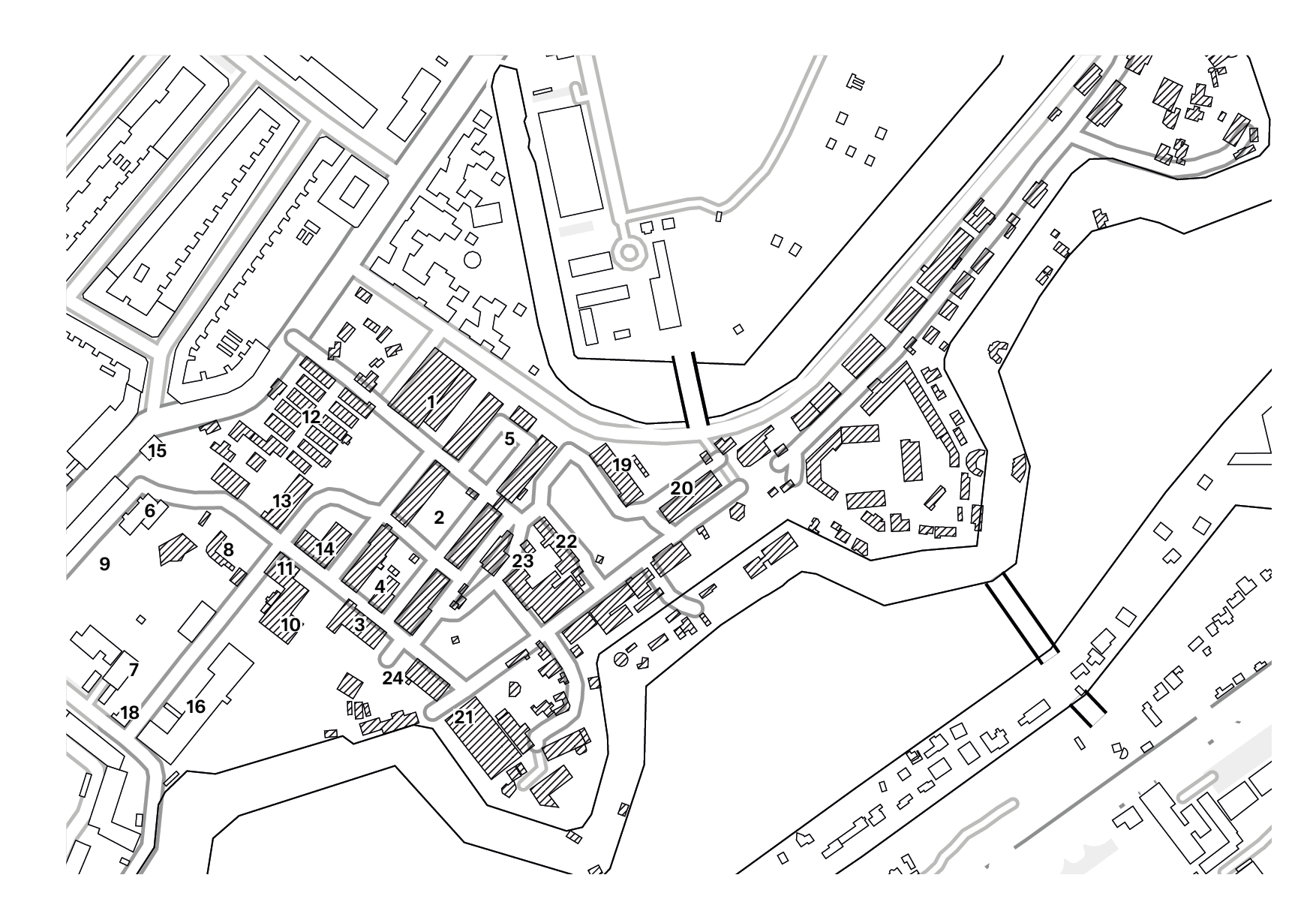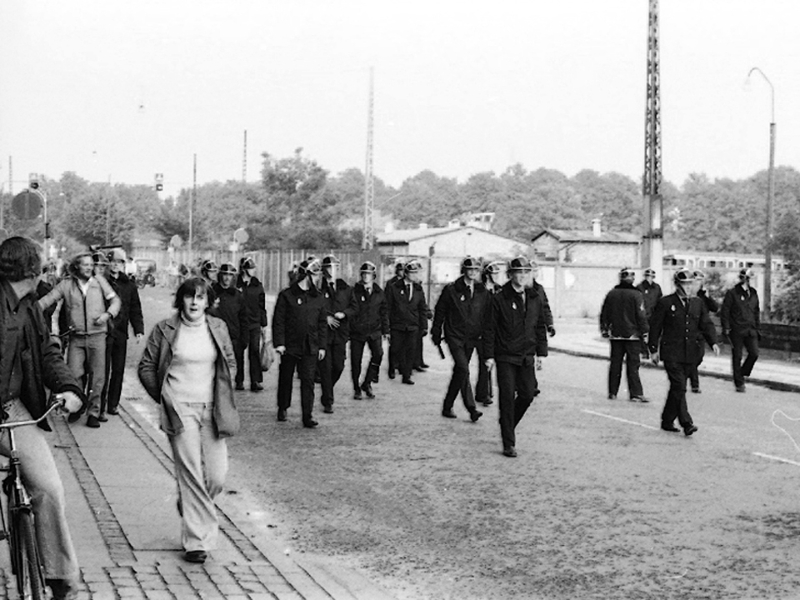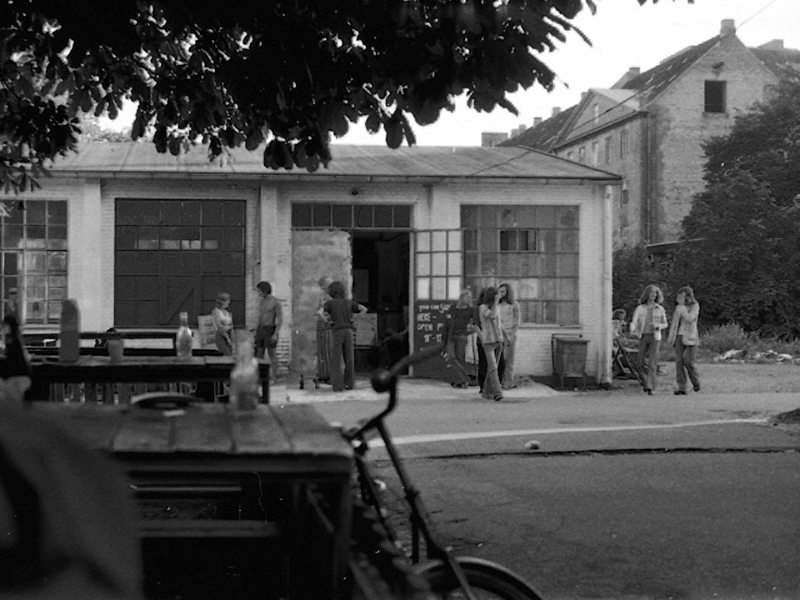Freetown Christiania
![]()
Copenhagen, Denmark
Squatter Settlement
1971 - Present

Copenhagen, Denmark
Squatter Settlement
1971 - Present
1 Gray Hall 2 Maelkevejen 3 Hotel 4 Woodstock 5 Scavenger’s House (South Region) 6 Optimist 7 Info House 8 Skateboard Track 9 Flea 10 The Court House 11 Bakery 12 Psyak 13 Machine Hall 14 Opera House 15 Rose House 16 Ark of Peace 17 Barracks 18 Boom House 19 Love House 20 Multi House 21 Green Hall 22 The Bath House 23 Bicycle Forge 24 Glass House
![2022 Free Town Christiania. Plan: Drawn from Open Street Map]() Freetown Christiania, founded in 1971, is an autonomous region in Copenhagen, that originated as a squat on the 34 hectare site of the former Bådsmandsstræde Barracks. The town has grown to encompass parts of Copenhagen’s ramparts and is home to 900 residents. Known for the open sale of drugs on pusher street, the car-free micronation attracts over a million tourists a year.
Freetown Christiania, founded in 1971, is an autonomous region in Copenhagen, that originated as a squat on the 34 hectare site of the former Bådsmandsstræde Barracks. The town has grown to encompass parts of Copenhagen’s ramparts and is home to 900 residents. Known for the open sale of drugs on pusher street, the car-free micronation attracts over a million tourists a year.
Residents from the early years describe it as having a wild west atmosphere and, like a small western town, it set up a bicycle workshop, a smithy, a bakery, and a candlestick shop. Houses were self-built from discarded and recycled materials and the Christanites practiced grassroots democracy, tolerance, and self-determination.
Over the decades, Christiania has evolved into a verdant village, officially purchasing the land in 2011. The journalist Tom Freston describes it as a “settlement of spare, humble, Hobbit-like homes that surrounds a lake and runs along gravel paths and cobblestone roads that wind through woods to the seaside. Older buildings have been restored and are often covered in murals. There are bars, cafés, grocery shops, a huge building-supply store, a museum, art galleries, a concert hall, a skateboard park, a recycling center, even a recording studio (inside a shipping container).”

Residents from the early years describe it as having a wild west atmosphere and, like a small western town, it set up a bicycle workshop, a smithy, a bakery, and a candlestick shop. Houses were self-built from discarded and recycled materials and the Christanites practiced grassroots democracy, tolerance, and self-determination.
Over the decades, Christiania has evolved into a verdant village, officially purchasing the land in 2011. The journalist Tom Freston describes it as a “settlement of spare, humble, Hobbit-like homes that surrounds a lake and runs along gravel paths and cobblestone roads that wind through woods to the seaside. Older buildings have been restored and are often covered in murals. There are bars, cafés, grocery shops, a huge building-supply store, a museum, art galleries, a concert hall, a skateboard park, a recycling center, even a recording studio (inside a shipping container).”











Nam semper semper ex
In porttitor pellentesque sapien